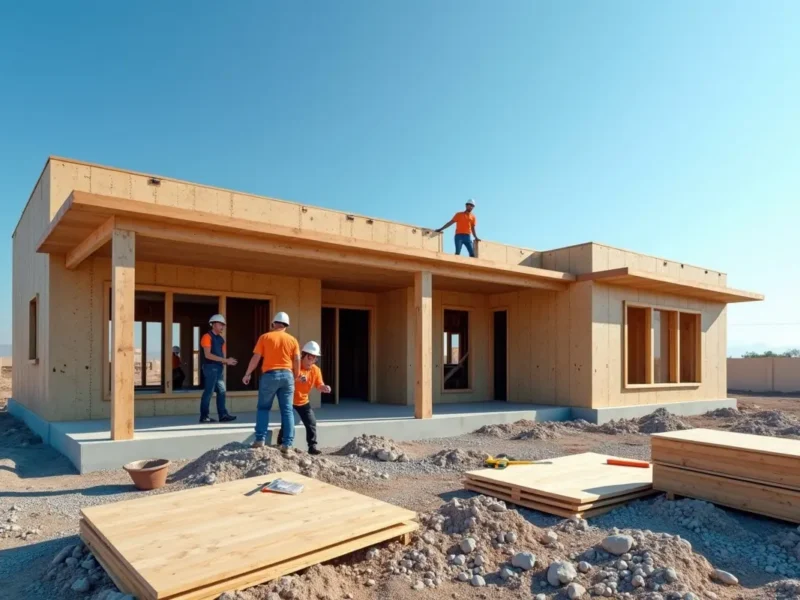Today’s buildings are no longer static structures designed for shelter—they are transitioning into complex, responsive environments that adapt to their occupants in real time. At the heart of this transformation is building automation, a sophisticated blend of sensors, cloud-connected devices, analytics platforms, and interfaces that bring accurate intelligence and interactivity to facilities of all shapes and sizes.
For anyone seeking to automate a building, the possibilities now extend far beyond traditional lighting or temperature controls. From monitoring occupancy and optimizing power usage to managing security, air quality, and beyond, modern building automation systems create real-time feedback loops that streamline operations and maximize efficiency.
The evolution of smart buildings makes it easier to retrofit older facilities or implement intelligent systems from the start of new construction. The driving force behind these changes is a mix of cost-saving potential, energy efficiency, and a genuine focus on occupant well-being. By reducing manual interventions and enabling centralized control, automation empowers building owners and occupants to have more dynamic, comfortable, and resilient environments. Smart buildings aren’t just “smart” for technology’s sake; they represent a vision for adapting our built environment to modern expectations.
Contents
Automation Technologies Redefining Workspaces
Across industries, automation is reshaping the modern workspace and how it functions daily. Today’s offices and campuses often feature motion-sensing lights that react instantly to activity, climate systems that learn from usage patterns, and access controls that can be managed and audited entirely from afar. What’s truly remarkable is the pace of this innovation—artificial intelligence and machine learning now allow these systems to continuously analyze trends, such as occupancy cycles and comfort preferences, and automatically adjust environments in real time.
Recent coverage from SmartCitiesWorld shows how AI-driven automation improves comfort and convenience for building users and directly impacts the bottom line by reducing unnecessary energy use and maintenance costs. For instance, predictive maintenance features can proactively alert facility managers before minor equipment issues become costly breakdowns. In some forward-thinking buildings, digital twin technology simulates and optimizes performance, helping facility teams anticipate and resolve bottlenecks before they impact anyone’s day.
- Intelligent HVAC adapts to not just time, but actual use, weather, and even anticipated occupancy.
- Lighting systems consider natural daylight, user activity, and personalized zones to ensure efficiency and comfort.
- Access management links with occupancy sensors, optimizing security and providing real-time capacity monitoring for different building zones.
Data and IoT: Unlocking New Possibilities
The real engine powering smart buildings is the growing ecosystem of IoT devices. Internet-connected sensors and meters now collect high-resolution data on everything from air quality and power consumption to occupancy, noise, and equipment status. This robust data stream is fed into analytics platforms that help facility managers track performance, identify usage trends, and drive continuous improvements.
Using this data, building operators gain unprecedented visibility into how spaces are used and where inefficiencies hide. Analytics can highlight underutilized areas, allowing organizations to consolidate space, save on overheads, or reallocate resources.
Air quality monitors can automate ventilation based on detected CO2 or particulates, and occupancy data can inform cleaning schedules and even influence future building design. This constant flow of information doesn’t flood teams with noise, but instead delivers the actionable insights required to keep environments safe, efficient, and responsive to the needs of their users.
- Footfall and occupancy patterns reveal opportunities for better scheduling and workflow planning.
- Trends in energy use help target investments in upgrades or retrofits for maximum impact.
- Historical data makes compliance reporting and sustainability audits far smoother and more reliable.
Energy Savings and Sustainability
With the building sector responsible for almost one-third of global energy consumption, sustainability isn’t simply a goal but an imperative. Building automation is now a front-line tool in this international effort. Automated controls ensure that lights, climate systems, and equipment only run when and where needed, often eliminating waste nobody realized was occurring.
For example, unoccupied meeting rooms might automatically see lights and the AC switch off. At the same time, startup and shutdown sequences can be tailored to weather or outside temperature, so no energy is wasted battling the elements.
The International Energy Agency notes that automation is pivotal in reducing emissions and meeting ambitious sustainability targets set by cities and governments worldwide. And it’s not only new buildings that benefit—retrofitting older facilities with connected controls can produce dramatic improvements with relatively modest investment.
Many organizations report double-digit energy-use reductions after implementing comprehensive automation, highlighting the powerful business case for these technologies and their environmental benefits. As the conversation shifts toward decarbonization and electrification, automation provides a key bridge—linking smart devices, renewable energy, and storage in a seamless, efficient whole.
- Timer settings, weather integration, and occupancy sensors keep systems operating at optimum efficiency at all times.
- Integration with solar, batteries, or grid demand-response programs is increasingly common.
- Ongoing monitoring ensures long-term efficiency gains, not just a brief spike after installation.
User Experience and Occupant Comfort
At its core, building automation isn’t just about efficiency or cost savings—it’s deeply tied to how people feel and function within a space. Advanced controls empower occupants to personalize their workstations or meeting rooms via smartphones or kiosks.
It’s common to find zoned climate systems that cater to different temperature preferences across large offices, automated shading that blocks glare during online meetings, and lighting systems that gradually adjust color or intensity to mirror the time of day. These features aren’t gimmicks—they reflect a shift to “human-centric” design that focuses on improving everyone’s daily experience.
Organizations that invest in intelligent environment controls often find they earn returns in ways that go beyond the balance sheet. Improved occupant comfort leads to better focus, higher team morale, and measurable drops in absenteeism and turnover rates.
In shared spaces, automation enhances accessibility with features like touchless entry, personalized wayfinding, and automatically adjusted ventilation during periods of high occupancy. Buildings that support well-being also signal a brand’s commitment to its people and the planet, attracting top talent and increasing the property’s value.
- Personal control over workspaces, such as climate and lighting, allows individuals to fine-tune their environment.
- Touchless, automated features enhance accessibility and hygiene.
- Healthy indoor air, achieved through real-time monitoring and automated filtration, supports physical and cognitive wellness.
Integration Challenges and Solutions
For many property owners, the daunting task isn’t deciding whether to automate—it’s figuring out how to integrate these new systems with what’s already in place. Many commercial buildings are a patchwork of previous upgrades and various devices, all speaking slightly different languages. Integrating new platforms without a scratch can be technically and economically daunting, especially in older facilities.
A growing shift toward open communication protocols and standardized hardware is lowering these barriers significantly. Systems built around BACnet, KNX, or similar protocols are more likely to “play nicely” with various legacy assets, reducing vendor lock and ensuring future expandability. Working with knowledgeable integrators and technology partners helps building owners chart a path from today’s infrastructure to tomorrow’s ambitions. Often, phased upgrades are the answer—gradually layering in automation while keeping disruption and costs in check.
- Open-standard solutions foster greater flexibility and vendor choice.
- Staged upgrades minimize disruption to day-to-day operations and budgets.
- Collaboration with seasoned integrators accelerates transformation while maintaining reliability.
Security and Privacy in Automated Buildings
As a building’s digital footprint expands, so does its vulnerability to new categories of risk. Security is now a fundamental consideration—not only to protect occupants’ privacy and data but also to safeguard the operation of key infrastructure. A compromised automation system can have far-reaching consequences, including unauthorized access to sensitive areas or disruptions to critical climate and safety systems.
To address these challenges, leading operators are deploying robust cybersecurity measures, including rigorous network segmentation, state-of-the-art authentication controls, and regular penetration testing to uncover hidden vulnerabilities. Clear occupant privacy policies also build confidence in the technology. Periodic reviews and ongoing updates are not a luxury, but a necessity in the fast-evolving digital landscape of today’s smart buildings.
- Strong firewalls, encrypted communication, and regular monitoring shield building systems from cyber threats.
- Access controls ensure only trained staff can interact with automation and management consoles.
- Frequent cybersecurity audits keep systems up-to-date and resistant to emerging threats.
Future Outlook for Building Automation
Looking to the future, the smart buildings of tomorrow will push beyond automation as it’s known today. Edge computing and AI innovations promise even greater building intelligence, where self-healing infrastructure, automated system optimization, and fully integrated renewable energy systems become the norm. The seamless interplay of all these technologies will boost resiliency and sustainability and reshape occupant expectations for comfort, personal agency, and environmental responsibility.
As government standards, corporate goals, and user expectations all increase, the technologies underpinning building automation are only set to gain more relevance and value. Retrofits and new builds will continue adopting advanced controls as the business, environmental, and human cases become too compelling to ignore. In many ways, the journey toward intelligent, sustainable buildings has only just begun—welcome to the era where every building can be designed to work smarter for everyone inside.



